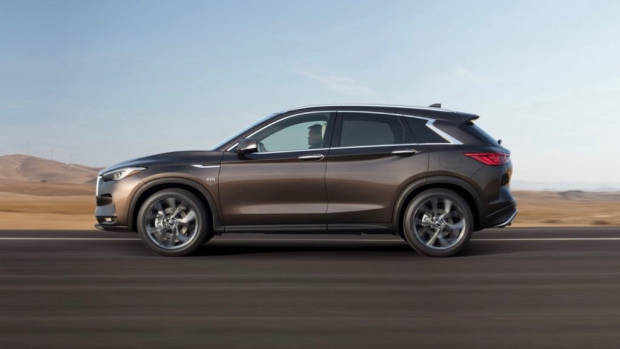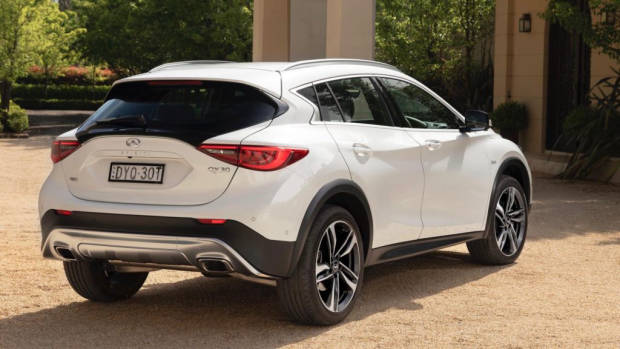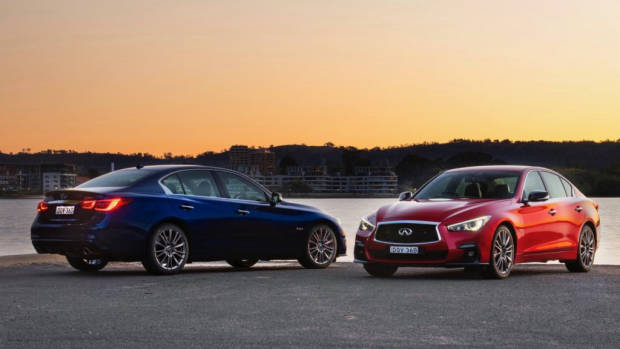-
Car Reviews
- All reviews
- Midsize SUVs
- Small cars
- Utes
- Small SUVs
- Large SUVs
- Large cars
- Sports SUVs
- Sports cars
- Vans
Latest reviews
- Car News
-
Car Comparisons
Latest comparisons
- Chasing Deals
Nissan’s most senior executive in Australia has backed the state of the Infiniti luxury brand locally, acknowledging that there is a process of “rebuilding” underway with the goal of development a “healthier business”.
Stephen Lester, the managing director of Nissan Motor Company in Australia, spoke with Chasing Cars this month about the progress of Nissan’s luxury marque. Infiniti was introduced to Australia in 2012 as part of an expansion into new markets after successful growth in the United States since 1989.
Infiniti has continued to struggle to gain traction in the fickle Australian premium car market. From sales of 304 in the brand’s first full year – 2013 – volumes grew to their best result of 807 in 2016. Sales receded to 649 units last year. By contrast, fellow Japanese luxury brand Lexus managed 8,819 sales; both were a far cry from the premium segment leader Mercedes-Benz, who shifted 32,201 cars in 2018.
“At the moment we’re under a rebalancing or a rebuilding of the network on an individual basis,” Mr Lester said, adding that he was “quite pleased with the performance of the dealers themselves.” The brand’s dealer count was reduced to seven last year as part of a rationalisation of the business.
“I think we have to do a better job overall with the Infiniti business in general to continue to grow it. I’m very pleased with the work [we’re] doing in terms of making a healthier business and starting to rebuild, and we will work with the global team on plans going forward.”
Part of Infiniti’s expansion earlier this decade also saw the brand push into Western Europe, though Nissan recently announced the luxury brand would be departing that continent by 2020.
Mr Lester would not speculate on whether Infiniti Australia could suffer the same fate, and would not name how many years Nissan Motor Company was committed to funding the brand-building effort locally.
In Australia, the premium end of the car market remains quite soft in the face of unsteady consumer confidence and tighter credit restrictions in the wake of the recent banking royal commission.
“I think the market is tough across the board in Australia,” Mr Lester said. “I think some of that is cleaning up some of the [car] business, to be honest. The reality is that like every other brand out there, we’ve got a challenge to get that share.”
Failing very stiff headwinds, 2019 should result in a return to sales growth for the brand, with the scheduled launch of the QX50 midsize SUV. The QX50, which is still slated for arrival this year once right-hand-drive production commences, will compete in the competitive medium premium SUV set alongside the BMW X3 and Audi Q5.
Lester says he wouldn’t be surprised if the QX50 became the brand’s top seller, but wouldn’t be drawn on specific volume predictions.
“To be honest, I haven’t seen what the production plan looks like for it, or the allocation we’re getting – but when you consider the rise in the popularity of SUVs and crossovers in that segment, I think it could certainly take a heck of a shot at [becoming the brand’s top seller].”
Perhaps the QX50’s most direct rival will be seen to be the Lexus NX, which managed 3,697 sales in 2018 while the Mercedes-Benz GLC-Class sold 5,605 copies to Australians.
On the flip side, Infiniti may suffer losses from the departure of the Q30 hatch and QX30 small SUV from the range next year. These vehicles were developed by Infiniti Europe – which is shutting down – and are restyled versions of the last-generation Mercedes-Benz A-Class. The ‘30’ siblings accounted for 26% of Infiniti’s Australian sales in 2018.
The brand’s other offerings include the Q50 sedan (33% of 2018 sales), related Q60 coupe (14%), QX70 medium SUV (11%), and the upper-large QX80 SUV (14%).
Should the QX50 fail to gain a foothold against the likes of the Lexus NX, the immediate consequences aren’t clear.
“I’m not going to speculate at this time on whether or not a product would be successful, or what our decisions would be. We don’t know how successful other models could be, so we’ll have to cross that bridge when we get to it.”
Latest news
About Chasing cars
Chasing Cars reviews are 100% independent.
Because we are powered by Budget Direct Insurance, we don’t receive advertising or sales revenue from car manufacturers.
We’re truly independent – giving you Australia’s best car reviews.


